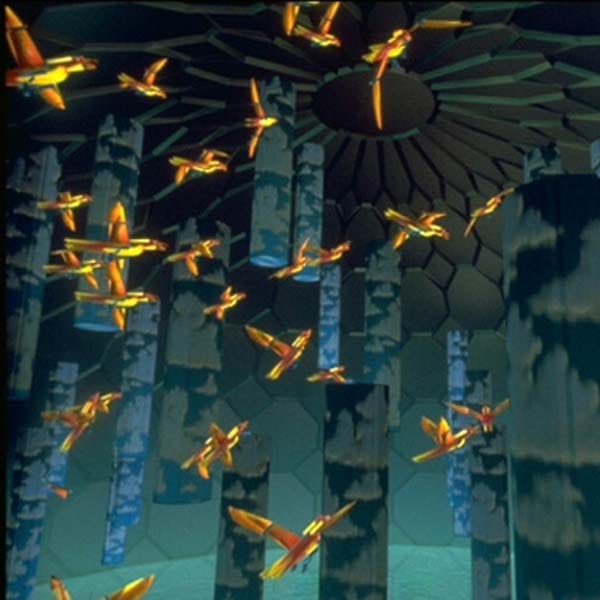Digital artist and mathematician Andy Lomas recalls the moment a romantic encounter between a bird and a fish breathed life into computer animation. One of the most fundamental events in my career was seeing a short film intended as a showreel piece for a company making computer animation hardware and software. Stanley and Stella in Breaking the Ice was created in 1987 by the Symbolics Graphics Division. The story concerns a romance between a bird and a fish, separated not only by being different species but also a thick layer of ice. However, it's the supporting cast that steal the show. The reason: behavioural animation created by Craig Reynolds.
Instead of just using the computer as another means of emulating conventional animation techniques, such as setting key-frames and calculating in-betweens, Stanley and Stella features flocks of birds and shoals of fish, whose motion was calculated using behavioural rules. Reynolds wrote a program called Boids, which set a number of rules such as making each creature maintain a minimum distance from its neighbours, or matching their speed and average direction. Other rules helped them try to avoid obstacles, allowing them to anticipate collisions and fly or swim smoothly around the obstruction instead.
By doing this, Reynolds was in effect simulating the decisions that the animals themselves might be making, based on their own perception of their world, rather than having a god-like animator explicitly controlling every position and motion directly.
The result: rich and subtle motion, often with complex emergent properties, such as when a flock splits into two, or how different flocks can join together. The motion produced can include results that aren't directly designed, but when you see them you know that they are natural and believable. In essence, the birds and the fish move as if they are alive.
As well as being a work that was personally incredibly influential, I think that Craig Reynold's Boids represents one of the biggest steps in computer animation — using simulation methods that really take advantage of what computers are capable of, rather than just emulating pre-digital techniques. His work is not only studied by new students of animation, but is considered a milestone in artificial life and the study of animal behaviour.
andylomas.com
Andy Lomas
…is an Emmy award-winning supervisor of computer generated effects who has worked on such films as Avatar, Alice in Wonderland, The Matrix sequels, Over the Hedge and Lost in Space. One of his latest artistic series, Morphogenetic Creations, can be seen as an obvious extrapolation of the concepts established by Boids. Each image appears as a compacted mass of complex bio-cellular forms; in the accompanying videos, which show the process of digital deposition used to create these images, each example writhes and plumes from a single unit to a hybrid branched or folded structure.
Craig Reynolds'
…work has centred around using procedural models to simulate complex natural phenomenon, often in relation to animal and human behaviours. These programs can provide scientific insight into behavioural systems as well as having applications in the fields of animation and computer games. A graduate of MIT, he worked on the original Tron film, as well as Batman Returns; he won an Academy Award in 1998 for “pioneering contributions to the development of three dimensional computer animation for motion picture production”.
September 16, 2014 2 minutes read
Best Boids
Digital artist and mathematician Andy Lomas recalls the moment a romantic encounter between a bird and a fish breathed life into computer animation.

